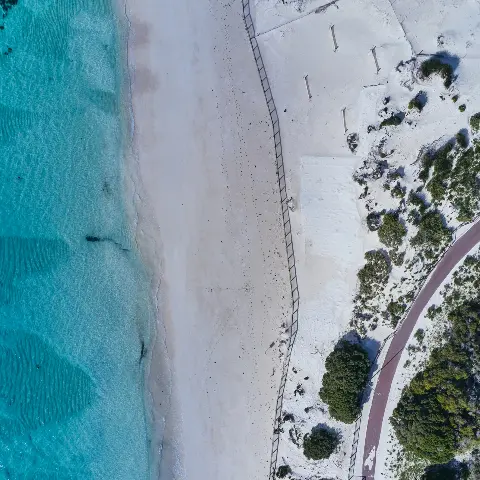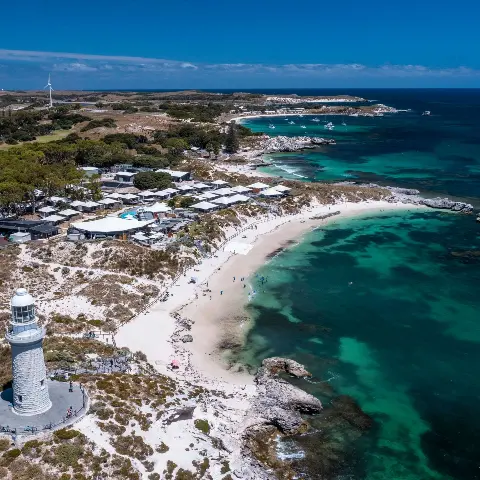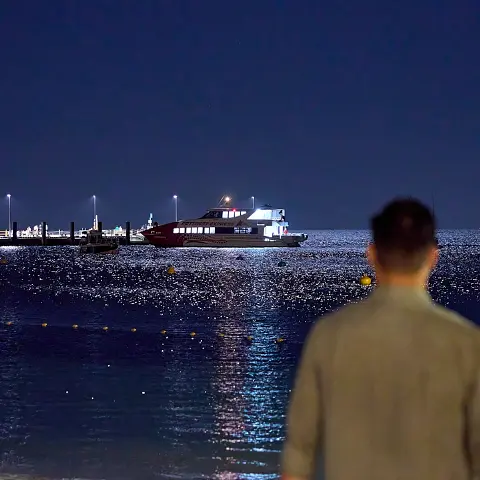4 APRIL 2022
Opportunity to inform future management of coastal hazards on Rottnest Island
The WA community is invited to provide feedback on the development of a Coastal Hazard Risk Management and Adaptation Plan (CHRMAP) for Rottnest Island.
The WA community is invited to provide feedback on the development of a Coastal Hazard Risk Management and Adaptation Plan (CHRMAP) for Rottnest Island.
Rottnest Island Authority (RIA) has received a Coastal Adaptation Grant of $25,000 from the Department of Transport to fund part of the planning process.
The development of a CHRMAP will allow for a considered approach to management of coastal hazards on Rottnest Island, to ensure public amenity and conservation values are maintained, alongside built and heritage assets on the island.
The final plan which will encompass all of Rottnest Island's 63 beaches and 20 bays is expected to be delivered in the second half of 2022.
Respondents can provide their feedback to project consultants Cardno here by Friday 6 May 2022.
The development of a CHRMAP will allow for a considered approach to management of coastal hazards on Rottnest Island, to ensure public amenity and conservation values are maintained, alongside built and heritage assets on the island.
The final plan which will encompass all of Rottnest Island's 63 beaches and 20 bays is expected to be delivered in the second half of 2022.
Respondents can provide their feedback to project consultants Cardno here by Friday 6 May 2022.
For more information on this project see the below FAQs.
Frequently Asked Questions
A CHRMAP is a strategic planning document that outlines management and adaptation pathways for areas and assets at risk of coastal hazards, such as erosion and inundation (flooding). Assets include both built and natural assets, which provide a range of values to the community, including social, environmental, economic and cultural/heritage values.
CHRMAPs provide the basis for planning the use of the coastal zone, by presenting the context around existing and future coastal vulnerability, and the framework for managing or avoiding associated risk. The CHRMAP is recommended under the State’s Coastal Planning Policy (SPP2.6), under the Planning and Development Act 2005. The CHRMAP will provide long term strategic direction for the island’s coastline, while identifying risk that requires decision making in the shorter term.
The purpose of the CHRMAP is to:
CHRMAPs provide the basis for planning the use of the coastal zone, by presenting the context around existing and future coastal vulnerability, and the framework for managing or avoiding associated risk. The CHRMAP is recommended under the State’s Coastal Planning Policy (SPP2.6), under the Planning and Development Act 2005. The CHRMAP will provide long term strategic direction for the island’s coastline, while identifying risk that requires decision making in the shorter term.
The purpose of the CHRMAP is to:
- Engage relevant stakeholders and the community in the planning, decision-making and the overall CHRMAP process.
- Improve understanding of coastal features, processes and hazards for the island’s coastline;
- Identify coastal hazards and predict when in the future their associated risk will become intolerable for areas and assets, requiring a management response;
- Identify assets (natural and built) and the services and functions they provide within in the coastal zone;
- Gain an understanding of asset vulnerability to coastal hazard impact;
- Identify the social, economic, environmental and cultural/heritage value of the assets that are vulnerable to adverse impacts from coastal hazards;
- Determine the consequence and likelihood of coastal hazards on the assets, and assign a level of risk; and
- Identify effective risk management actions and how these can be incorporated into short and longer-term decision-making.
Rising mean (average) sea level has been measured along the WA coastline for over a century. It is generally accepted that this is due to climate change and will continue into the future.
The latest forecasts from the Intergovernmental Panel on Climate Change (IPCC), Bureau of Meteorology (BoM) and Commonwealth Scientific and Industrial Research Organisation (CSIRO) indicate that between 0.5 and 1 metre of sea level rise can be expected by the end of the century. All levels of government are preparing for the effects of this.
The WA Government has incorporated consideration of climate change effects into its planning policies, which is to be assessed for specific areas and conditions through the CHRMAP process.
As a result, CHRMAPs are currently being undertaken, or have been completed, for many coastal areas around Western Australia, managed by Local Government Authorities with assistance from the WA Government including the cities of Rockingham, Wanneroo, and Greater Geraldton and the Shire of Broome.
The CHRMAP will be a key tool to ensure Rottnest Island Authority has the best information possible in relation to coastal risks and changes for future planning and management decisions.
The latest forecasts from the Intergovernmental Panel on Climate Change (IPCC), Bureau of Meteorology (BoM) and Commonwealth Scientific and Industrial Research Organisation (CSIRO) indicate that between 0.5 and 1 metre of sea level rise can be expected by the end of the century. All levels of government are preparing for the effects of this.
The WA Government has incorporated consideration of climate change effects into its planning policies, which is to be assessed for specific areas and conditions through the CHRMAP process.
As a result, CHRMAPs are currently being undertaken, or have been completed, for many coastal areas around Western Australia, managed by Local Government Authorities with assistance from the WA Government including the cities of Rockingham, Wanneroo, and Greater Geraldton and the Shire of Broome.
The CHRMAP will be a key tool to ensure Rottnest Island Authority has the best information possible in relation to coastal risks and changes for future planning and management decisions.
Coastal vulnerability is the extent that an area of coastline is susceptible to effects such as erosion, storm surge and ongoing sea level rise. It is assessed for assets and areas by combining:
- Exposure – the likelihood of impact;
- Sensitivity – the consequence if impact occurs; and
- Adaptive capacity – the ease with which assets or areas can adapt, or be adapted, to the hazard.
A key component of the CHRMAP is identifying the community’s coastal values as well as the valued natural and built assets along the coast. The CHRMAP will cover the entire coastline of Rottnest Island and will be delivered in eight stages.
- Stage 1: Establish the Context (with community consultation)
- Stage 2: Risk Identification
- Stage 3: Vulnerability Analysis
- Stage 4: Risk Evaluation
- Stage 5: Risk Treatment (with community consultation)
- Stage 6: Implementation Plan
- Stage 7: Monitoring and Review
- Stage 8: Final CHRMAP (with community consultation)
Cardno’s team comprises coastal engineers and scientists who specialise in coastal processes investigations, coastal monitoring, coastal engineering design and coastal and marine environment investigations. They have delivered multiple CHRMAP projects throughout WA, including for Rockingham, Wanneroo, Gingin, Dandaragan, Onslow and Port Hedland. They are currently working on CHRMAP projects for the Town of Cambridge, City of Stirling and City of Albany coastlines.
There will be multiple points of engagement for the community and stakeholders to be involved in the process of creating a CHRMAP, particularly around identifying coastal assets and understanding coastal values. This will include the opportunity to complete an online survey and attend information pop-in events over the coming months.
RIA anticipates that the final CHRMAP, developed in consultation with the community and key stakeholders, will be delivered in the second half of 2022.





